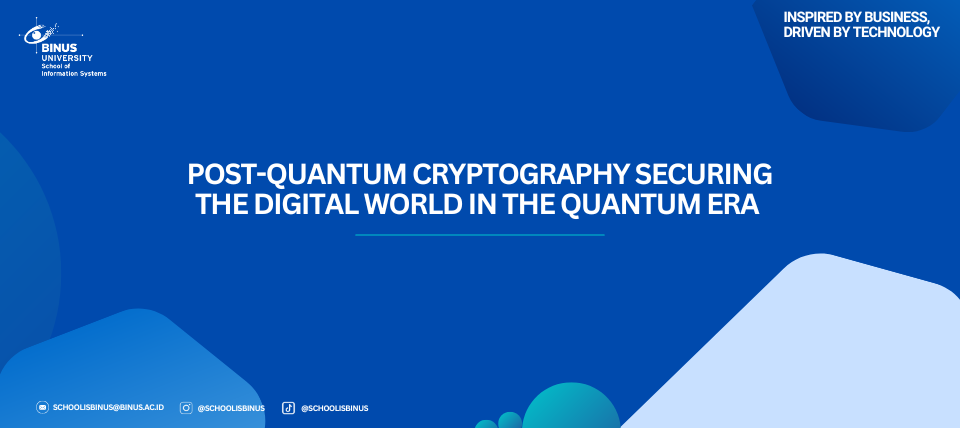Post-Quantum Cryptography Securing the Digital World in the Quantum Era

Post-quantum cryptography is an emerging and critical area of cybersecurity dedicated to developing encryption methods that can remain secure even in the presence of powerful quantum computers. For decades, digital security has relied on algorithms such as RSA and elliptic curve cryptography (ECC), which base their strength on the computational difficulty of mathematical problems like integer factorization and discrete logarithms. For classical computers, solving these problems would take an astronomical amount of time, making the encryption effectively unbreakable with current technology. However, quantum computers operate on fundamentally different principles, using quantum bits (qubits) that can represent multiple states simultaneously, allowing them to process vast amounts of information in parallel. With quantum algorithms such as Shor’s algorithm, these machines could factor large numbers and solve discrete logarithms exponentially faster, making traditional cryptographic systems obsolete in a matter of seconds.
The urgency surrounding post-quantum cryptography is driven by the rapid pace of quantum computing research. Although large-scale, fault-tolerant quantum computers capable of breaking current encryption do not yet exist, advancements by companies like IBM, Google, and other research institutions suggest that their arrival may only be a decade—or even a few years—away. Compounding the risk is the “harvest now, decrypt later” threat model, where adversaries capture and store encrypted communications today with the intention of decrypting them once quantum capabilities are available. This means that data with long-term sensitivity, such as classified government records, medical histories, or intellectual property, is already at risk if not protected by quantum-resistant methods.
Post-quantum cryptographic algorithms are designed to be secure against both classical and quantum attacks. Among the most promising approaches are lattice-based cryptography, hash-based cryptography, code-based cryptography, multivariate quadratic equations, and supersingular isogeny-based cryptography. Lattice-based methods have gained particular attention for their balance of strong security guarantees and practical efficiency, making them suitable for deployment in real-world systems. The U.S. National Institute of Standards and Technology (NIST) is at the forefront of efforts to standardize these algorithms, working with researchers worldwide to test, evaluate, and finalize post-quantum standards. Several candidate algorithms have already been selected for the final stages of evaluation, with widespread adoption expected in the coming years.
Transitioning to post-quantum cryptography is a complex challenge. It requires more than simply replacing existing algorithms; entire systems—including software applications, hardware devices, and communication protocols—must be updated and tested for compatibility. This process will involve close collaboration between governments, industries, and technology providers to ensure that security is maintained during the migration. Hybrid cryptographic solutions, which combine current algorithms with quantum-resistant ones, are expected to play an important role during the transition period, providing a bridge between today’s systems and future-ready security frameworks. In addition, the shift will require new skills and expertise, making workforce training and public awareness essential components of the transition strategy.
The stakes are high. Failure to prepare for the quantum era could leave critical infrastructure, global financial systems, and personal privacy exposed to unprecedented risks. Conversely, early investment in post-quantum security can ensure a smooth transition and preserve trust in digital systems. This is not merely a matter of keeping pace with technology; it is about anticipating a transformative shift in the global computing landscape and acting before the threat becomes reality.
Ultimately, post-quantum cryptography represents a proactive defense against one of the most significant cybersecurity challenges of the 21st century. Just as the internet reshaped communication, commerce, and society, quantum computing will bring profound changes—some of which may disrupt established security norms. By prioritizing research, standardization, and gradual implementation now, we can ensure that the coming quantum era strengthens, rather than undermines, the foundations of our digital world. The choices made today will shape the security of information for decades to come, determining whether quantum computing becomes a tool for progress or a weapon against privacy and trust.

